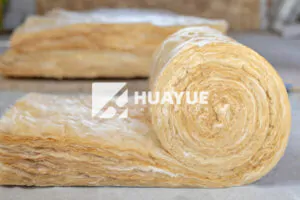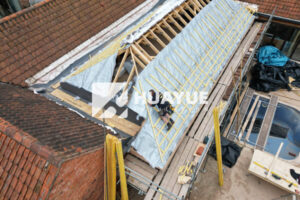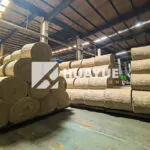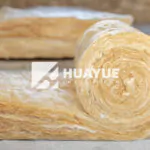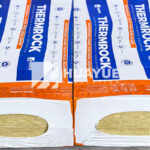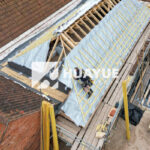Fiberglass Insulation Faced vs Unfaced: What’s Best for Your Project?
If you don’t understand the difference between faced and unfaced fiberglass insulation, you may waste money or lose energy savings.
Faced fiberglass insulation has a vapor barrier attached, helping block moisture. Unfaced does not include a vapor barrier and is used where moisture control isn’t a priority.

Choosing the right insulation keeps your building safer and more energy efficient. I have helped contractors avoid serious mistakes by matching insulation to the application. Knowing the difference also makes it easier to follow building codes and pass inspections.
What is faced fiberglass insulation?
Adding a facing isn’t just about appearance. Moisture can ruin an insulation system, causing mold and damage.
Faced fiberglass insulation is manufactured with a layer of kraft paper or foil as a vapor barrier. It blocks moisture transfer from one side of the insulation to the other, helping prevent condensation and mold growth.

Faced fiberglass insulation includes a backing made of kraft paper or foil. This backing is attached during manufacturing. It acts as a vapor retarder, slowing moisture from moving into the wall or ceiling cavity. I have seen construction projects suffer when contractors don’t use the right type. The vapor barrier is critical in areas with high humidity or large temperature differences between inside and outside. In my experience, proper use of faced insulation keeps indoor air cleaner and helps heating and cooling systems work better. Builders can install faced insulation facing the warm side of the room in most climates. Some choose foil facing for added radiant barrier. Manufacturers design the vapor barrier to also serve as a fastening surface, which speeds up installation. Faced fiberglass insulation is typically used in exterior walls, crawl spaces, attics, and ceilings. Builders working in cold or wet conditions rely on it to keep buildings protected against moisture problems long term.
| Feature | Faced Insulation | Unfaced Insulation |
|---|---|---|
| Vapor Barrier | Included (paper/foil) | None |
| Moisture Resistance | High | Low |
| Typical Application | Walls, ceilings | Between studs/joists |
| Installation Direction | Vapor barrier faces in | Either |
Where should faced insulation be used?
It is tempting to think any insulation will work anywhere. This idea causes headaches later.
Faced fiberglass insulation is best for exterior walls, attics, and crawl spaces or wherever moisture protection is required. It should be installed facing the heated space in cold climates.

Installing faced insulation in locations that are exposed to outside air or humidity is very important. If you use unfaced insulation in an exterior wall, condensation can soak the insulation, leading to mold and rot. I have visited job sites where water damage was costly because insulation was not installed correctly. Builders often use faced insulation to build a house envelope resistant to moisture. In areas with high humidity, the kraft or foil facing can stop vapor from seeping into the building’s frame. Choosing faced insulation for crawl spaces or attics cuts down on future repair costs. Unfaced insulation can be suitable for interior walls, especially in rooms where moisture is not an issue, like bedrooms or offices. The vapor barrier is unnecessary there because insulation’s main job is sound control or keeping rooms comfortable. Even then, some builders still prefer a faced product for ease of handling and quick installation. I recommend checking local building codes, since some regions may require faced insulation for certain parts of a home.
| Area | Faced Insulation | Unfaced Insulation |
|---|---|---|
| Exterior Walls | Required | Not recommended |
| Interior Walls | Optional | Common |
| Attics | Preferred | Rarely used |
| Crawl Spaces | Strongly suggested | Not advised |
WHAT’S THE DIFFERENCE AND HOW TO INSTALL?
Insulation products look similar stacked in the warehouse, but choosing the wrong one means more work and higher costs.
The biggest difference between faced and unfaced fiberglass insulation is the vapor barrier. Faced insulation includes the vapor retarder, which is necessary in humid areas or temperature-controlled spaces. Unfaced lacks the barrier, making installation requirements simpler.
Installation of faced insulation requires careful positioning of the vapor barrier. It should face toward the warm side of the living space—usually the interior in cold climates and sometimes the exterior in hot climates. I have watched builders forget this step and cause moisture problems inside walls. Unfaced insulation does not require a specific direction and is simpler for interior partition walls. To install faced insulation, staple the paper flange to the wall studs or ceiling joists. This creates a continuous vapor barrier. Gaps or misaligned seams can let moisture in, risking building damage. In some cases, local codes require an additional vapor retarder or specific installation techniques. Taking the time to install insulation correctly saves money and avoids headaches later. I always remind customers to confirm installation details with suppliers and local inspectors, since small mistakes have big consequences years later.
| Step | Faced Insulation | Unfaced Insulation |
|---|---|---|
| Orientation | Vapor barrier faces interior | No specific direction |
| Attachment | Staple flange to framing | Fit between joists/studs |
| Moisture concern | High | Low |
| Code compliance | Often required | Usually not specified |
WHAT SHOULD THE CUSTOMER DO?
Many contractors pick insulation based on price alone. This short-sighted thinking causes problems.
Customers should choose insulation based on application: faced for moisture control, especially on exterior walls, attics, and crawl spaces. Unfaced suits control of sound or temperature in interior walls.
Choosing the right insulation isn’t just about cost upfront. In my experience, using faced insulation in the wrong place causes mold, rot, and expensive repairs. If unsure, ask your supplier about local building codes and climate needs. Contractors and engineers should measure the risks of moisture before buying insulation. Crop out places where vapor can surround insulation, such as below-grade walls or between unheated and heated spaces. Ask about installation help. Installing insulation right ensures long-term building health and lower energy costs. Some insulation brands offer guides or support to install faced or unfaced insulation correctly. I remind customers not to cut corners. Correct insulation is a small cost compared to big repairs down the road.
| Customer Question | Faced Insulation? | Unfaced Insulation? |
|---|---|---|
| Is area exposed? | Yes | No |
| Is moisture a risk? | Yes | No |
| Is code requirement? | Often | Sometimes |
| Ease of install? | Staple, align | Simple fit |
Conclusion
Correctly choosing between faced and unfaced fiberglass insulation means better building health and lower repair costs.
You may also be interested in:
Ready to Get Started?
Get in touch with our experts for personalized solutions tailored to your needs.
Get Free QuoteLatest Articles
Let's Work Together
Ready to take your business to the next level? Get in touch with our team of experts and let's discuss how we can help you achieve your goals.
Get Free Solutions
